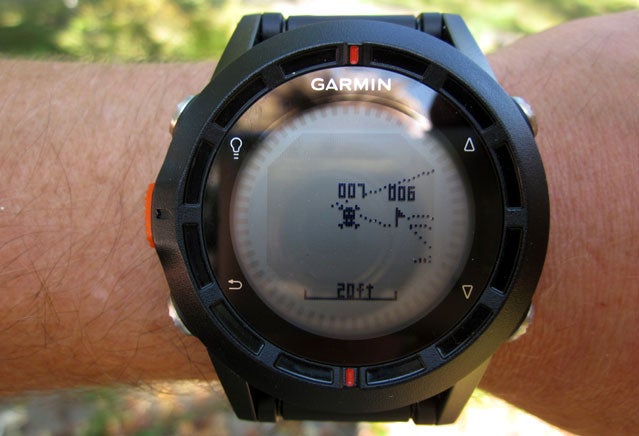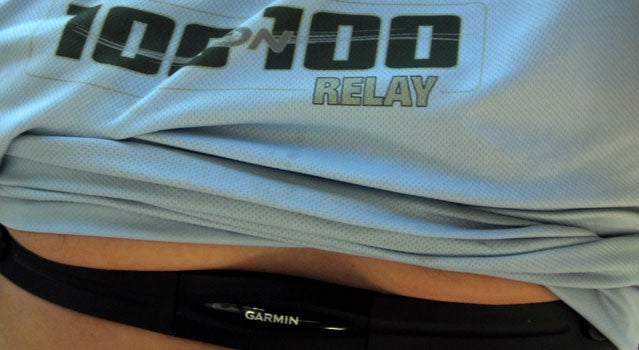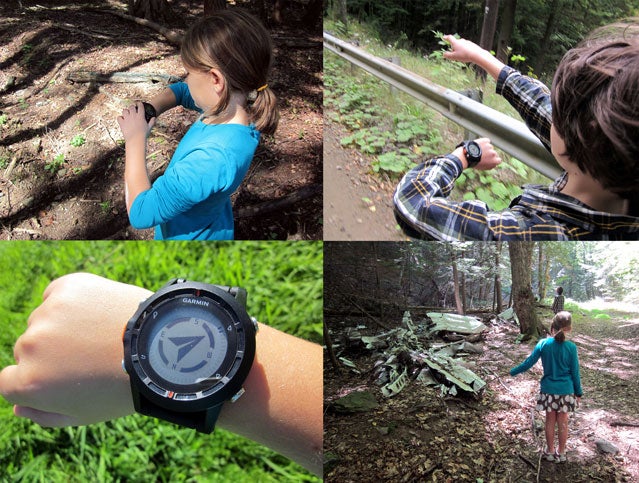To try out one of the most sophisticated mountaineering GPS watches to date—the $399 , which hit stores this week— that would serve as a guide for our testers. We made the route a little tortuous, with over a mile of twisty logging roads and trails disappearing into overgrown grass. Then we had our young assistants—call them the Gear Kids—try to reach the destination. Our testers aren’t very tech savvy, so they needed help understanding how to get around the Fenix screens, but once they understood the buttons, they had no trouble following the maps to the spot. The Fenix is actually pretty easy to figure out.
I was at first skeptical about the utility of maps on a 3/4×3/4-inch screen, but I’ve been convinced. Even the shrunken images on the 70×70-pixel screen make a big difference when using a watch as a navigation tool. Previous GPS wristwatches, like Garmin’s Forerunner series, use a directional arrow to show you which way to turn along a “trackback” to a trailhead. But a simple arrowhead doesn’t give you the big idea. The maps on the Fenix showed our testers how the route dog-legs sharply to the left then goes relatively straight for a mile and then takes a sharp switch back. By glancing at the screen, it became easier to use the arrows.
The term “map” may be a little deceptive. Neither Garmin nor is able to provide professional maps inside these watches. The Garmin device we tried had only the U.S. state borders and major cities labeled (Boston, New York). The only maps you get are ones you create yourself from previous hikes or ones you download from Garmin’s . But it seems likely that the site will soon be populated with common hikes and climbing routes around the country. Out of the gate, Garmin’s site has routes in , , and the . And, for what it’s worth, our 1.5-mile test route in Vermont, of course. This way, anyone in the New England area can download this route to their watch and walk the not-so-treacherous path to the wreckage of an old plane crash.
After the jump, we’ll go into some of the other features on the Fenix (pronounced like the bird) and how they performed for us.
Garmin Fenix: Tech Features

There are a lot of good things to say about the —honking big buttons for gloved or sweaty hands; GPS elevation corrected by barometer for the greatest accuracy; both ANT+ and Bluetooth in the same device for the ultimate array of connectivity options. Over just a few days, I actually haven’t found anything to criticize. That will probably come, and I will keep you updated. The latest wrist tops typically have such complex software that it takes a while to find the bugs. When I first got my Garmin Forerunner 405, for instance, it took the first rainstorm to realize that the watch is totally unusable in very wet conditions because of its touch bezel. There is likely to be a similar annoyance hidden inside the Fenix, but I haven’t found one yet.
This is a big watch, almost as heavy as my father-in-law’s , but it does more. The biggest feature is maps. (The custom mountaineering route we created during our review is marked in the photo above with the nifty skull-and-crossbones waypoint icon.)
At one point, wrist watches only told the time. Then they got onboard GPS, and started tracking your position. The next stage is maps—even on a tiny screen—which were super helpful by providing context when navigating in the wilderness.
The Fenix represents a whole new class of orienteering tool (Garmin has made mapping watches before, but the products look more like cell phones strapped to your arm). In March, Garmin’s competitor, Suunto, put out with simple monochrome maps. The creates similar maps of your hiking routes and shows you how to follow routes others have forged.
The Fenix screen actually shows a lot of detail. That’s as important during a race as it is when navigating a hike. We’ll talk about the watch as a workout tool after the jump.
Garmin Fenix: Workout Tool

Garmin positions the as a hiking, hunting, fishing, and mountaineering device, but the watch has all the features of a workout tool as well. It connects to heart rate monitors and bike cadence sensors using the wireless system from Garmin subsidiary ANT+. I happened to have an old ANT+ heart rate strap, shown above, from my Forerunner 405, and it paired with the Fenix easily.
A cool new feature in the Fenix is its ability to pair with Bluetooth devices as well. This means you can send workouts and maps to your cell phone, and thus to the Web.
Using the Fenix for trail runs, I could see my heart rate against a 30-minute graph of altitude, grade, and vertical speed. Keep in mind, the elevation is more trustworthy in a barometer watch than with GPS alone. Typical GPS running watches use satellites to judge elevation, which is often off because of the geometry from outer space. The Fenix is one of only a few watches, like only the and , with a barometer inside, and nothing’s better for understanding elevation changes on a mountainous ultra course.
At 2.9 ounces, the Fenix is bulky, but the upside is battery life. The watch’s lithium battery charged to 50 percent in about a half hour, allowing the GPS to run all day. On a full charge, you supposedly get 50 hours with sensors on. This is a huge bonus, since many GPS watches are short-lived.
In comparing the Fenix’s distance with a fixed distance over two miles, the Fenix was a few yards off each time, which is typical of any GPS device.
All in all, in my first week with the Fenix, I’ve found a lot to like. I have another week in the review period and will keep you updated on any problems that crop up. Feel free to post any questions in the comments, and I’ll be happy to answer them.


